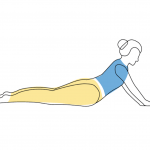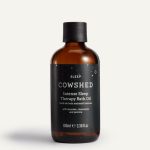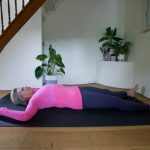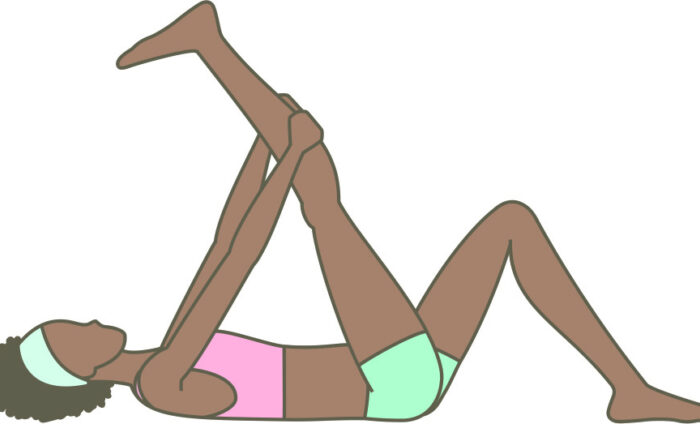
Yoga for open water swimmers – Part 1
Yoga is good for reducing stress and physical tension, toning and building muscle strength, correcting breathing habits, increasing energy levels, improving digestion and increasing metabolism, improving circulation (important when in open water, especially with the cold), balancing the nervous system as well as strengthening the immune system and the mind, and improving concentration.
What are the benefits of yoga therapy in a swimming programme? Functional yoga improves the biomechanics of the joints, in particular the hips, shoulders and spine. These are very important in swimming and a greater awareness of your body also reduces the likelihood of injury.
Body awareness
Yoga helps with pain, strain, neck and shoulder tension and lack of mobility. Even very capable swimmers can find that yoga exposes their limited range of movements. After my shoulder problems, yoga gave my joints greater stability. Plus, greater body awareness will enable you to increase technical efficiency in the water due to a better understanding of the mechanics of your body.
Go with the flow
Yoga is also restorative and can help concentration – focusing on breathing and ‘the flow’ helps build the necessary mental strength needed for swimming for miles and hours in the open water.
Use these yoga positions to help develop endurance and concentration and to strengthen and tone the whole body.
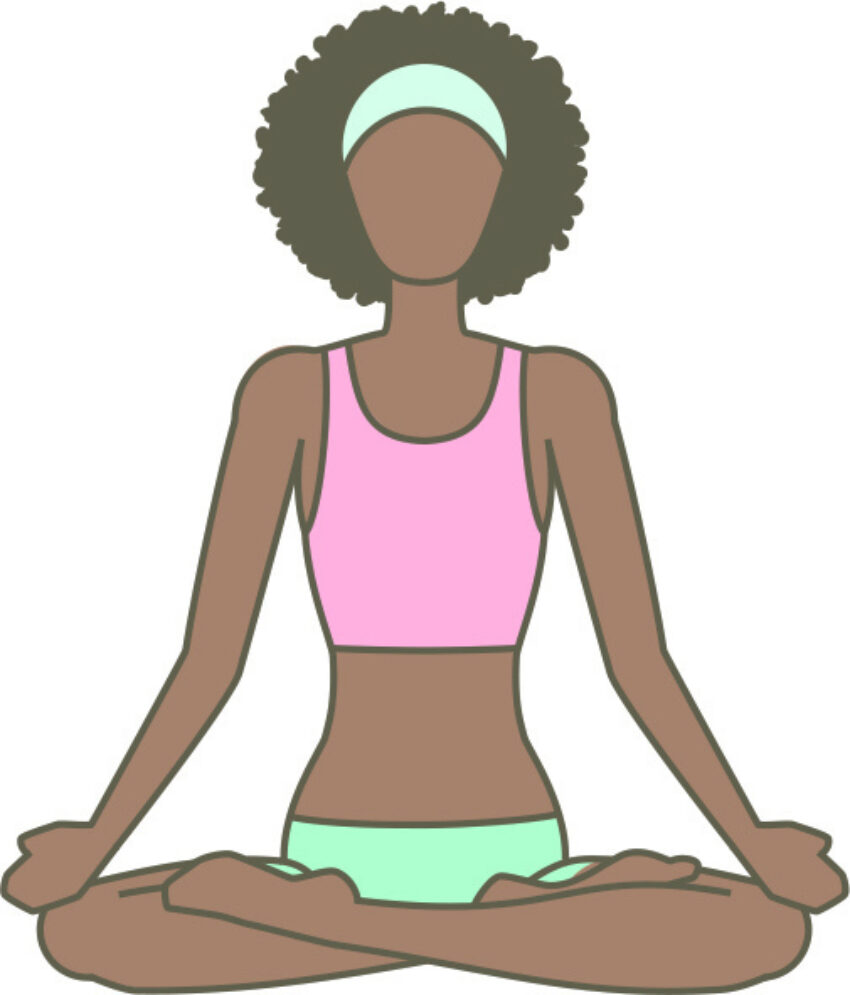
Ujjayi breath
To enhance and empower
Technique:
- Starting in seated pose with spine straight and head straight (use a block or cushion to sit on if hips are tight).
- Start to breathe, slightly constricting the back of the throat as if you were whispering or making the sound of the ocean. Allow the breath to flow in and out gently through the nose.
- Engage the breath for two to five minutes.
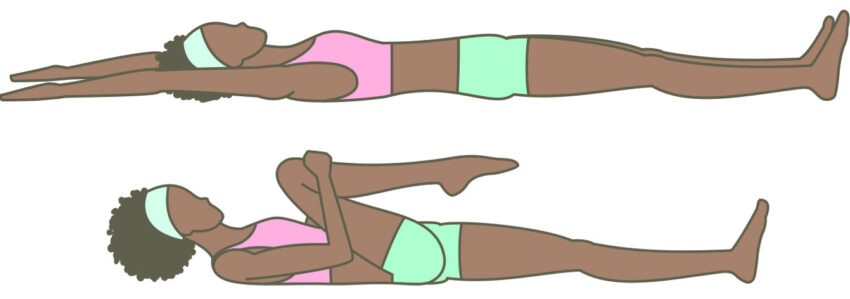
Apanasana
Detox and hip opener
Technique:
- Lie down with legs fully extended
- Breathe in and float arms over head
- Exhale, arms back by side and knee comes to chest
- Hug the knee with both hands and add head lift to knee
- Hold and focus on the sound of the breath
- Release and repeat 3 -4 times on each side

Hip circles
Technique:
- Keep right knee to chest and right hand to knee and circle hip anti and clockwise directions. Keep left hip glued to floor to give depth to the pose. Repeat on both sides
Hip openers encourage blood flow to hip and improve mobility. Close eyes and engage Ujjayi breathing during the poses.
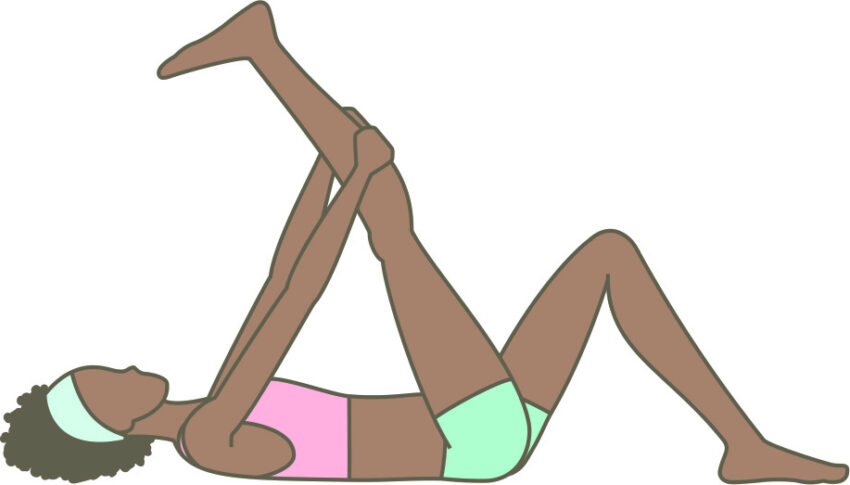
Hamstring stretch
Technique:
- Stay on the mat, legs bent and feet on the floor, breathe in and raise the right leg up, foot to the ceiling (use a strap or hold the ankle of foot and try and keep the leg straight as possible)
- Improvers work with other leg straight to the floor and add head to knee lift.
- Hold for 60 seconds and focus on the breath
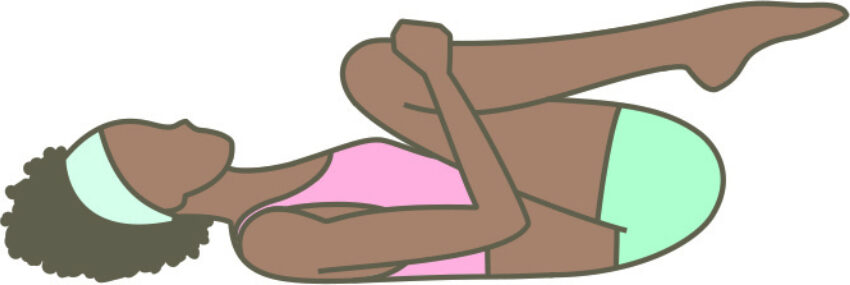
Breaststroke legs
Technique:
- Stay with back on the floor and bring both knees to the chest, hands on knees
- Using flowing breaths add hip circles and increase the depth of the circle. Work towards extending the legs fully out and back.
- Keep tummy tight and abs engaged to protect the lower back
- Knees to chest and rest for 30 seconds with full focus on the Ujjayi breath
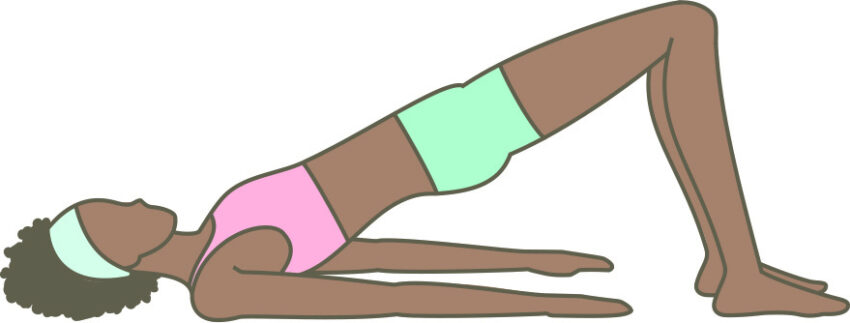
Bridge pose
Improves circulation and focus
Technique:
- Lie on your mat and bend your knees, feet on the floor by your buttocks, hips apart (improvers: bring the knees in towards each other)
- Keep arms by the sides and focus on the breath
- Lift the hips up towards the ceiling, keep the abs toned and allow the chest to open and pelvis lift upwards. Have a sense of knees moving toward the front of the mat and hold for up to 4 breaths. If using the improvers’ pose then keep the knees together
About the author
Dr Julie Bradshaw MBE has been achieving records in long distance, English Channel and marathon swimming since 1978. In 1979, she first swam the English Channel, aged only 15. She holds the record for the fastest butterfly crossing of the English Channel and has also swam butterfly around Manhattan Island. Julie is a Swimming Teacher and Coach for Indoor & Open Water Swimming and Channel Swim Training and other long distance swimming events.
Find Yoga for Open Water Swimmers Part 2 here







